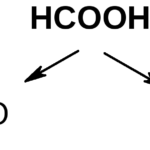In the ever-evolving area of robotics and automation, a new class of innovation has emerged with a big capability. This advanced technology is designed to burrow horizontally underground without human intervention. Supplying a huge range of software programs throughout various industries. From production to environmental management, the potential to make use of this technology is large. This article explores the software programs for horizontal self-burrowing robotics. And the importance of obtaining a horizontal self-burrowing robotic application. patent to defend intellectual assets in this growing area.
Understanding Horizontal Self-Burrowing Robots
A horizontal self-burrowing robot is a robotic device engineered to dig or tunnel underground, normally without outside human control, with the use of sophisticated navigation and propulsion structures. Unlike traditional drilling gadget that frequently relies on vertical movement, these robots are designed for horizontal burrowing. This function allows them for use in various software programs where horizontal excavation is wanted, which includes laying pipes, cables, or even acting underground inspections.
These robots are prepared with sensors, cameras, and superior substances that allow them to navigate through diverse soil sorts even keeping off limitations like rocks or underground pipes. Additionally, a few models encompass faraway management or independent functionality, making them suitable for each guide operation and automatic mission.
Utility Applications of Horizontal Self-Burrowing Robots
The software of horizontal self-burrowing robots spans numerous sectors. These robots clear up complicated challenges by offering solutions for diverse industries, such as creation, telecommunications, power, and environmental safety.
Construction and Civil Engineering
In the construction enterprise, laying underground pipes and cables calls for tremendous effort and time using traditional methods. A horizontal self-burrowing robot simplifies this technique by autonomously burrowing via the ground and positioning pipelines, electrical traces, or fibre optics without the need for great digging or trenching. This technique reduces disruption to surface systems, minimizes labour expenses, and increases the performance of underground infrastructure initiatives.
For example, in city areas where surface disruption can motivate traffic delays or harm to current infrastructure, those robots offer an opportunity that ensures installations are completed with minimal inconvenience.
Telecommunications and Data Networks
Telecommunication networks require the set up of underground cables for net and cellphone services. The traditional technique of laying those cables entails trenching and good sized labor, which can damage roadways, landscapes, and different infrastructure. Horizontal self-burrowing robots provide an extra green solution for laying cables by way of burrowing underground whilst avoiding floor disruption.
Moreover, these robots can be deployed in hard environments wherein manual cable set-up is tough, along with below rivers or in rocky terrain. By improving efficiency and reducing charges, horizontal burrowing robots are remodelling the manner statistics networks are installed and maintained.
Oil and Gas Pipelines
The oil and gasoline industry frequently installs underground pipelines for transporting sources over great distances. Horizontal self-burrowing robots streamline this procedure by burrowing through the floor with excessive precision. This precision facilitates keeping away from current underground utilities or environmental dangers even as minimizing surface impact.
In addition to pipeline installation, these robots can also inspect and maintain existing pipelines, making sure that any leaks or damages are speedy detected and addressed. This reduces the environmental dangers associated with oil and fuel pipelines, making them a precious asset to the electricity zone.
Environmental Management and Agriculture
Horizontal self-burrowing robots are becoming an essential device for environmental control initiatives. These robots can perform subsurface monitoring, soil sampling, and statistics collection without demanding the surface surroundings. This is in particularly beneficial for assessing soil infection, and groundwater stages, or monitoring the results of agricultural practices on soil fitness.
For instance, in agriculture, horizontal burrowing robots can help lay irrigation pipes below fields without disturbing crops or farmland. Additionally, they may be used to install underground sensors to monitor soil moisture and nutrient levels, supplying actual-time data that improve farming practices.
Utility Installation and Maintenance
Utility businesses, which include water, fuel, and electric carriers, regularly need to put in or keep underground pipes, and conduits. Horizontal self-burrowing robots provide a realistic answer for these responsibilities with the aid of decreasing. The want for massive-scale excavation and guide labour. Whether it’s putting in new infrastructure or retaining present systems, these robots help software companies function greater effectively. Even as minimizing disruption to the general public and surroundings.
For instance, at some stage in emergencies like water or gasoline leaks, a horizontal self-burrowing robot can quickly be deployed to inspect and restore underground systems without causing extra damage to roads or property.
Patent Protection for Horizontal Self-Burrowing Robots
As the call for horizontal self-burrowing robots grows, so does the significance of securing highbrow property rights via a horizontal self-burrowing robot utility application patent. An application patent grants distinctive rights to the inventor or assignee, allowing them to manufacture, sell, and use the patented era for a hard and fast length. Obtaining a patent is critical for companies or those who want to guard their innovations from being copied or used without permission.
1. Why Is a Patent Important?
Securing a horizontal self-burrowing robotic utility software patent protects the inventor’s innovation from competitors and guarantees that the era can not be replicated without consent. This patent allows the inventor to hold a competitive gain in the marketplace by controlling how their technology is used.
A patent also adds cost to an enterprise with the aid of improving its reputation as an innovator. Companies with patented technologies are regularly viewed as leaders in their industry, attracting more customers and capacity traders.
2. The Patent Application Process
The process of acquiring a horizontal self-burrowing robotic utility application patent includes numerous steps:
Research and Documentation: Before applying, it’s crucial to behavior thorough studies to make sure that the generation is unique and not already patented. Documenting the discovery, inclusive of its layout, capability, and application, is important for submitting the utility.
Patent Filing: Once the studies are complete, the inventor should file a patent utility with the perfect patent workplace (such as the US Patent and Trademark Office, or USPTO). The utility includes distinct descriptions, drawings, and claims that outline the discovery’s forte and scope.
Patent Examination: After submitting, the patent office critiques the utility to ensure that it meets all felony necessities. This examination manner can take numerous months, at some point of which the applicant can be required to offer additional records. Or clarify certain components of the discovery.
Grant of Patent: If the patent office approves the software, the inventor is granted extraordinary rights to the discovery. This patent normally lasts for 20 years from the submitting date, giving the inventor manipulation over how the generation is used at some stage in that duration.
3. Challenges and Considerations
While patents offer big protection, the method of securing a horizontal self-burrowing robotic utility software patent may be complex and time-consuming. Applicants ought to make sure that their invention meets all prison criteria, which include being novel, non-obvious, and useful. Additionally, filing a patent may be luxurious, so inventors ought to weigh the charges and benefits of searching for safety.
Another essential consideration is worldwide protection. If the generation is supposed to be used in a couple of international locations, inventors may additionally want to use it for patents in each jurisdiction in which they plan to perform. This can add complexity to the patenting technique but is frequently essential to protect the discovery the world over.
Future of Horizontal Self-Burrowing Robots
As industries continue to undertake automation and robotics, the call for horizontal self-burrowing robots is expected to develop exponentially. These robots offer several advantages, inclusive of improved efficiency, reduced exertion charges, and minimized environmental effects. With the rise of smart cities and expanding infrastructure desires, horizontal self-burrowing robots will probably play a pivotal function in shaping destiny urban environments.
Moreover, improvements in synthetic intelligence and device mastering may additionally further beautify the abilities of these robots. Permitting them to perform greater complex responsibilities with greater autonomy. As the era evolves, securing a horizontal self-burrowing robotic utility application patent.
Conclusion
The development of horizontal self-burrowing robots represents an extensive development in robotics, with programs across industries. Such as construction, telecommunications, oil and gasoline, agriculture, and environmental management. These robots provide green, cost-effective, and environmentally pleasant solutions to demanding situations related to underground paintings.
For groups and innovators working in this space, obtaining horizontal self-burrowing robotic utility software. Patent is vital for protecting highbrow property and maintaining a competitive aspect. As technology continues to conform, those robots will play a more and more crucial function in present-day infrastructure and automation. Securing patent safety guarantees that innovators can lead the way in this interesting and rapidly developing field.












